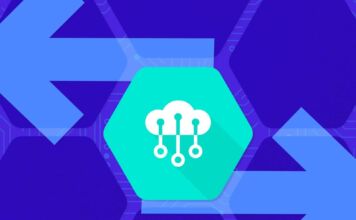
Regardless of your industry, the concept of “saving time and money” sounds appealing to your company, right? There may be manual tasks that your employees in the field, on the floor, or at a site have to perform that take time and cost money. Still, this utilization of resources could be reduced with a better way to understand asset locations and how to determine their effectiveness. Asset tracking solutions can help your organization better use resources, including employee time and money. This is only possible, of course, if the solution is tailored to your needs.
Though we can agree across many industries that utilizing resources at their full capacity is a challenge, the way to solve for your specific use case most likely differs depending on the underlying problem, the asset itself, and many other factors. Some differing scenarios may be: whether the asset is inside, outside, or a combination of the two; whether or not the asset can have a piece of hardware attached to it; and whether or not the asset is worth the cost of the tracking itself. Let’s look at the steps you can take to address your specific asset tracking solution.
Assess the Underlying Problem & Potential Outcomes
To find the best solution to the problem you are faced with, you will want to start with finding a collective definition of what it is. Take the time to brainstorm and document the problem with your team; it may help to start with a few questions:
- Where are we inefficient with understanding the location, status, or due date of our assets?
- Are there places we are spending money on buying new assets because we do not understand the true utilization of what we already have?
- What are the cost savings of implementing an IoT asset tracking solution? Are the savings worth the cost of implementation?
- Maybe you want to focus on the safety of your employees, in order to improve the escalation process during a dangerous situation would knowing the location of your employee improve the rate of response from your security team?
Once you have your problem on paper, refer back to it when researching potential solutions. Make sure that the solution you plan on implementing is getting to the core of the problem itself. Document the outcomes you are hoping to achieve through implementing asset tracking, whether saving $10,000 on reducing equipment purchasing each quarter or increasing the feeling of safety across all employees.
Understanding the Super Users
Go into the field with your employees and determine where they are coming up with creative solutions for solving these problems for themselves daily. Maybe your employee has created a secret stock of tools hidden in a corner to ensure they have what they need to get their job done each day. Those tools are being underutilized since the other employees cannot access them, not only when this employee is working but also when they are not.
When you understand your employee’s use cases, you can better implement a solution that will solve for them, and you will be able to use those scenarios as a tool for user adoption. For the employee storing a secret stock of tools, being transparent that those tools will now need to be shared across the whole team may come as a shock initially. By allowing them to log into a web application and see the location of all like items with a simple search, they will see that there will be a more efficient way to track down what they need.
Finding the Right Solution
Software
Now that you understand who your super users are, you can start to determine who will need access to the software to implement it, utilize it, and maintain it. When selecting the software solution, ease of use will increase utilization and reduce the cost of training your employees. They will have an easier time understanding the value of the application. If the interface takes a manual to understand it, there may only be a few employees who will take the time to learn it and potentially a few more who will be required to.
In the case of employees needing access to the technology from the job site, you may want to account for the mobility of the interface. It may not be possible to bring a laptop to a construction site, so having a mobile app will be necessary.
Customizing the features specific to your use case may be a priority for you. Consider the underlying problem and ensure that if you are using something off the shelf, it will truly support your use case.
Accounting for the price and support to upkeep the software will be important when determining which solution to move forward with.
Hardware
Each use case will require a different approach in terms of the tradeoffs between range, bandwidth, and energy consumption with the hardware you select. In some instances, you may want to know the real-time location of an asset because it is consistently in motion, so you will need the heartbeat of the hardware to be set to happen frequently. In other instances, you may not expect your asset to move for hours or days, so you will want to reduce the timing of the heartbeat to reduce energy consumption.
GPS may be your best choice when attempting to track assets outside, but when tracking assets inside, beacons may be your best choice. Accounting for the price and support to upkeep the hardware will be important when determining which solution to move forward with.
Implementing the Solution
Once you have selected your hardware and software, you will want to shift into the implementation phase.
Each implementation will be different. For example, suppose I am implementing an asset tracking system for tools in my factory. In that case, I may expect them to move every 8 hours inside the facility, and I may want to use beacons with an infrequent heartbeat and, therefore, longer battery life to track the location of the assets over time. If I am implementing an asset tracking system for the location of my fleet of trucks that are often in motion, I may want to use GPS with a frequent heartbeat to have a consistent view of the location of my fleet.
Create a plan for rolling your IoT asset tracking solution out to your whole company:
- Plan the installation
- Prepare the training
- Create a phased rollout
- Begin with super users
- Have super users train others on the job
- Rollout to all employees
- Have a place for your employees to give feedback
Though asset tracking can save your company time and money, finding the right solution is a very important step in the process. To get the most out of the investment of implementing hardware and software, you will want to do research and work with partners who are willing to adapt to the needs of your use case. Getting something off the shelf may seem appealing, but it becomes challenging to solve your particular problem when it is not customized to your specific needs. Across industries, there is not one asset tracking solution that fits all use cases. Keep this in mind while solving for yours!




 Contact Company
Contact Company






 Latest IoT News
Latest IoT News








